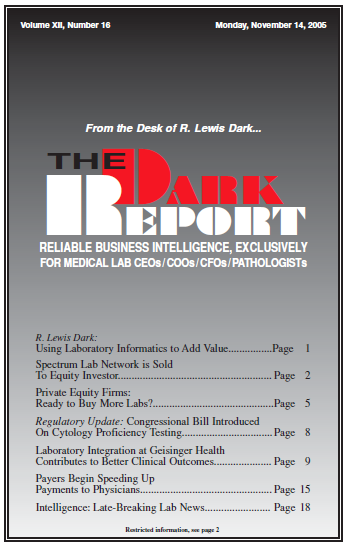CEO SUMMARY: There have been two benefits from the use of sophisticated laboratory informatics at the laboratory division of Geisinger Health System in Danville, Pennsylvania. Benefit one is a standardized, fully-integrated lab information system that collects all lab test results, including point-of- care, into a single data repository that feeds Geisinger’s electronic medical record. The …
Lab Integration At Geisinger Contributes to Better Outcomes Read More »
To access this post, you must purchase The Dark Report.


